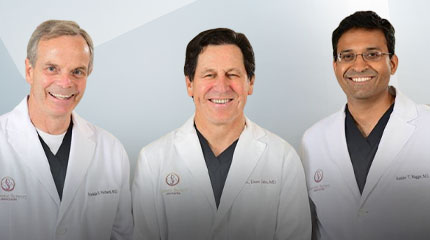UNDERSTANDING FAT TRANSFER
Conveniently located to serve the areas of Maryland, Virginia and Washington, D.C.
Posted on February 15, 2022 under Liposuction
Liposuction is one of the most popular and effective ways to get rid of stubborn fat on your body. However, removing fat isn’t the only option when it comes to body contouring – fat transfer is one option to add volume to areas of the body where you want it. If you haven’t considered fat transfer as part of your procedure, then here’s what to know about it and what you can expect.
What is Fat Transfer?
Fat transfer is a procedure also known as fat grafting. During fat transfer, your plastic surgeon transfers fat from one part of the body to another with the goal of improving or augmenting one area of the body with fat. It involves liposuction to extract adipose tissue and then process it. Later, after purification, it’s injected into the area where improvement is wanted.
Fat transfer has been around since the 1990s and is used to treat areas such as the breasts, buttocks, face, hips, feet, and hands.
How Popular is Fat Transfer?
Fat transfer has increased in demand over the years since 2016. The most common procedures, according to the American Society for Aesthetic Plastic Surgery are the following:
- Breast fat transfer with more than 25,000 procedures performed
- Face fat transfer with more than 56,093 procedures performed
- Buttocks fat transfer with more than 19,019 procedures performed
The Most Common Areas for Fat Transfer
The biggest reason to have fat transfer is to fill out an area of the body that needs enhancing. The most commonly treated areas include the following:
- Breasts: Fat transfer breast augmentation can have a modest increase in breast size. It’s important for the breasts to be in good shape and tone first. Sagging cannot be addressed with fat transfer. Some women get fat transfer breast augmentation after undergoing breast cancer treatment.
- Buttocks: Fat transfer for buttocks is more subtle than butt augmentation with implants, which offers more dramatic results.
- Face: Fat transfer for the face can reduce the appearance of crow’s feet, smile lines, and laugh lines. It can give more youthful volume to the cheek’s.
- Hands: Fat transfer for the hands can add volume and make your hands look more youthful, reducing the look of ropey veins and tendons.
- Acne scars: If you have scarring or depressions from areas that previously had acne, fat transfer can correct and fill in ice pick scars.
What to Expect After Fat Transfer
After fat transfer, there’s a small recovery period, but you can generally return to your regular routine after a few days. You’ll experience some redness, bruising, tenderness, and swelling in the treated area, which is normal. You may also have some scarring in the area where you had liposuction, but scars are small and easily concealed. Over time, they should fade.
How long your results last depends on various factors, like living a healthy lifestyle and preventing weight fluctuations. Make sure to follow your plastic surgeon’s instructions carefully and come in for a follow-up when necessary.
Schedule a Consultation
The best way to learn more about fat transfer is by meeting with a board-certified plastic surgeon. To schedule your appointment at our Bethesda office, contact Cosmetic Surgery Associates by calling or filling out our online contact form.
Our Plastic Surgery Associates team includes Dr. Franklin Richards, Dr. A. Dean Jabs, and Dr. Keshav Magge. Each of our plastic surgeons is board-certified, and together they have over 60 years of combined experience. Drs. Richards, Jabs, and Magge are all highly qualified in procedures for the face, breast, and body, and pride themselves in providing excellent results through our state-of-the-art, Quad A certified operating centers






